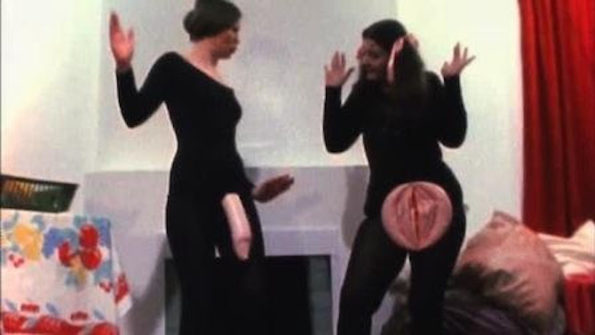Search
To search for an exact match, type the word or phrase you want in quotation marks.
A*DESK has been offering since 2002 contents about criticism and contemporary art. A*DESK has become consolidated thanks to all those who have believed in the project, all those who have followed us, debating, participating and collaborating. Many people have collaborated with A*DESK, and continue to do so. Their efforts, knowledge and belief in the project are what make it grow internationally. At A*DESK we have also generated work for over one hundred professionals in culture, from small collaborations with reviews and classes, to more prolonged and intense collaborations.
At A*DESK we believe in the need for free and universal access to culture and knowledge. We want to carry on being independent, remaining open to more ideas and opinions. If you believe in A*DESK, we need your backing to be able to continue. You can now participate in the project by supporting it. You can choose how much you want to contribute to the project.
You can decide how much you want to bring to the project.

Numerous types of workshops populate contemporary art spaces. There are artist’s workshops, works of art that are workshops, there are workshops for discussion, in others typical questions relating to the production of art and its institutional inscription are debated, where its political dimensions are discussed, or specific technical skills are learnt. Besides all these workshops we imagine there are also workshops that in principle are far from artistic practices but the forms, members, and contents of which have long since been adopted in the art system by different agents and for a variety of reasons.
Today, the ubiquity of the workshop as an artistic trope can be explained in many ways. In the European context, for example, it has been related to the failure of the Welfare state and the lacunae left by the weaknesses of its cultural policies. At the end of the 1990s, critics like Claire Doherty and Alex Farquharson talked about New Institutionalism. A curatorial paradigm that came to the boil in spaces managed by artists and later migrated to institutions such as museums and art centres, substituting some of the social and cultural deficiencies that states and municipal governments didn’t know how to satisfy. Practices of a social nature, such as workshops and community projects, secured their presence in the programming of these centres, just as in the words of Doherty “cultural experience becomes recognised as a primary component of urban regeneration”, [[Claire Doherty, “The Institution is Dead! Long Live the Institution! Contemporary Art and New Institutionalism”, in Engage, no. 15 (verano 2004)]]. Within this paradigm, the art centre became a laboratory for the testing of new forms of social interaction and cultural production, and workshops fulfilled an important role in the phenomenology of these experiments. This umbrella sheltered the flourishing of new pedagogies such as the concretion of the education departments as the founding stones for European museums for contemporary art.
But it was also fertile soil for the reification of practices that, far from pursuing mechanisms linking the art centre and the community, sharpened the class divide between artists and non-artists. Incorporating the forms and democratic rhetoric of the workshops format, workshops led by names such as Rirkrit Tiravanija and Marina Abramovic, as well as millions of more or less well-known others, today populate art spaces, functioning according to the codes of exclusion of the negativity of the avant-garde. However, the two extreme variations of the workshop trope I have shown here are far from being indigenous productions of European art centres at the turn of the millennium; as is customary, before their appropriation their forms had already been proved valid in other contexts. I want to dedicate the rest of this text to three important cases that are reminders of the necessary political, productive, and even inclusive character the workshop still conserved in its first associations with artistic practices of the avant-garde at the end of the 1960s. These are the relation between workers and artists in Argentina, the groups of feminist consciousness raising in California, and the political and pedagogical work of the German Joseph Beuys.
Between 1966 and 1970, dematerialised artistic practices that placed an emphasis on the social relations constituting the art system, proved to be extremely useful for evading the surveillance and discipline the regime of the dictator Juan Carlos Onganía imposed on the arts in Argentina. Tied up in this safeguarding was also the desire to formulate new epistemic spaces and forms of circulation for the work of dissident artists. The I Encuentro Nacional de Arte de Vanguardia (Rosario, 1967) is a good example. Formulated as an encounter for academic discussions, the sessions served as a forum for debate about the conditions of art production, the analysis of its institutional relations, and the tracing of networks of solidarity with other sectors of Argentine society equally persecuted at the time by the regime, such as the Tucumano union of workers in the sugar industry. The experience didn’t just deal with an ontological revision of dissident art, so much as traced practical strategies to ensure the viability of its production and survival in an extremely hostile climate [[Paloma Checa-Gismero, “El I Encuentro Nacional de Arte de Vanguardia: una experiencia de arte como investigación”, in Raquel Caerols (ed) La praxis del artista en el proceso creativo. Creación artística versus investigación en las artes. (Universidad Nebrija: Madrid, 2013)]]. In this precursor of the contemporary workshop of institutional critique, the participants acted as academics, unionists, and community organisers. Their debate produced a new working model, based on class solidarity; the well-known Tucumán Arde festival (Rosario, 1968).
For six weeks at the beginning of 1972, Womanhouse was open to the public in Mariposa Street, Los Angeles. An extension of the university programme of feminist art in CalArts, this experience was led by Judy Chicago and Miriam Schapiro but counted with another 31 female participants. This large-scale, collaborative project was derived from the dialoguing practices used to raise social awareness employed by feminist activists to tackle problems such as the unequal distribution of domestic work, sexual and reproductive health, equal rights in the workplace and gender-related violence. Womanhouse held installations, working groups, and discussions, as well as cycles of performance, seeking the translation of these debates into visual codes. It also became a context for technical apprenticeships, where women were taught the use of tools, electronic equipment and construction techniques. As the inaugural essay says: “the age-old female activity of homemaking was taken to fantasy proportions.”[[[Norma Broude y Mary D. Garrard, eds., The power of feminist art: the American movement of the 1970s, history and impact (New York: H.N. Abrams, 1994)]].
Also in the 1960s is the pedagogical and political practice of the German Joseph Beuys. Even though his plastic works have long since been incorporated into the hegemonic narratives developing the notion of an autonomous and self-referential art, it is true that within the nucleus of his practice exists the statement of art as the articulator of community awareness that transcends the strictly artistic. In his efforts to situate his work within a political struggle, the workshop occupies a central place. Within, as much as beyond, the Academy of Dusseldorf, in uncountable educational situations, Beuys and his collaborators questioned German economic and environmental policies, the military interventions of the USA in Vietnam, and the rationality of bureaucracy [[Claudia Mesch & Viola Michely, eds., Joseph Beuys: the Reader (London: I. B. Tauris, 2007)]]. The workshops of Beuys operated under the assumption of self-determination as a political and an artistic tactic but pursued objectives that transcended the ambit of art.
Closing one’s eyes and thinking of the ubiquity of the workshop trope in the spaces of the industry of contemporary art, various examples and possibilities undoubtedly spring to mind. But there is one type of workshop that occurs all too often. Thinking of the use Nicolas Bourriaud made of the term relational aesthetics at the end of the 1990s, one also has to recall the immediate context in which the examples the French curator sites are situated. A space, such as the Palais de Tokyo, isolated in extremis from the multiple political processes active in the city of Paris, will always be found wanting as a scenario to inaugurate a new art based on social relations. If this is the immediate referent for our idea of the workshop, we won’t just obviate decades of work with this trope at the margins of the art system, but will also border on hedonism based on the belief that the production of symbols is autonomous, like the air, taken as a given.
I am increasingly interested in the instances when the art system bravely assumes a revision of the material and epistemological fractures that sustain it. I like it when today what is called the ‘workshop’, the space to think about the rhetoric and practices, can honour the inclusive, collaborative and programmatic history that made this word strong.

Paloma Checa-Gismero is Assistant Professor at San Diego State University and Candidate to Ph.D. in Art History, Criticism and Theory at the University of California San Diego. A historian of universal and Latin American contemporary art, she studies the encounters between local aesthetics and global standards. Recent academic publications include ‘Realism in the Work of Maria Thereza Alves’, Afterall, autumn/winter 2017, and ‘Global Contemporary Art Tourism: Engaging with Cuban Authenticity Through the Bienal de La Habana’, in Tourism Planning & Development, vol. 15, 3, 2017. Since 2014 Paloma is a member of the editorial collective of FIELD journal.
"A desk is a dangerous place from which to watch the world" (John Le Carré)